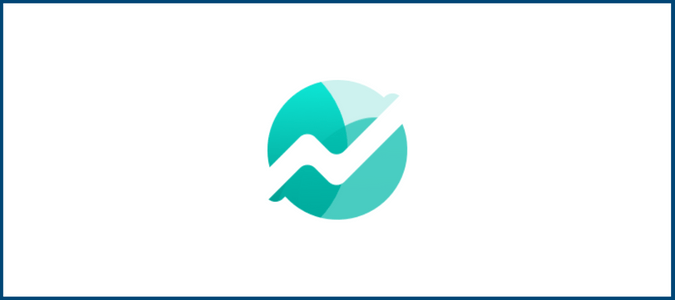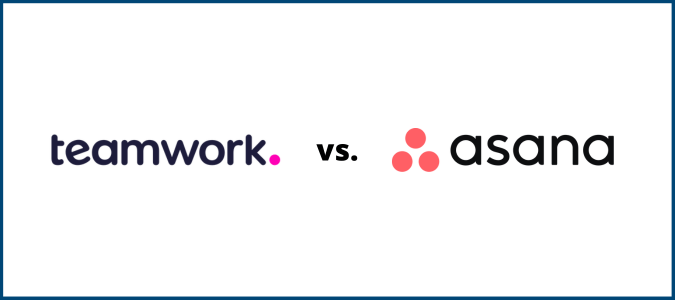Find the right project management methodology and it can save you boatloads of time.
Making you the project hero and employee of the month.
As in every discipline, project management has its unique set of rules, procedures, practices, and techniques.
Given the wide range of project objectives, you rely on a myriad of guiding principles.
That helps navigate complex plans and processes in the project’s lifecycle.
In a nutshell, project management methodologies answer the question…
Why does the project manager do things that way?
Why Project Management Methodology Is So Important
Project management methodologies are a defined set of guiding principles, methods, and processes.
For this reason, they are intimately tied to how your project unfolds.
PMM methodologies also increase the project manager’s efficiency.
Most processes are repeatable from one project to the next, allowing for consistency across projects.
Additionally, analyzing which projects you are qualified to lead isn’t always obvious.
Project management methodologies structure, standardize, and organize work methods.
By considering the methodology, a project manager can identify their capacity to handle a project even before it begins.
It is also much easier to identify weak points and mistakes so that the manager can tweak their work methods for the next project.
This way, the project manager can improve their skills incrementally across time, making them more capable and efficient at handling projects throughout their career.
Furthermore, project management methodologies create a common ground for the project manager, project team, project owner, and stakeholders.
With pre-defined templates, guidelines, and definitions of the project’s various aspects, it is much easier to get all parties involved on the same page.
In particular, the project team benefits from a shortened learning curve, creating an ideal environment for efficiency, focus, and cohesion.
Lastly, more and more clients and project owners are demanding transparency.
In the current age where data reigns, clients want to make sure that their money and resources are put to good use.
Project management methodologies have built-in checks and balances, making it easy to identify challenges, opportunities for improvement, inefficiencies, the potential for derailment, and so on.
Naturally, clients and stakeholders have more confidence in project managers that provide accurate and real-time updates throughout the various milestones.
A case for project management methodologies
According to the Pulse of the Profession 2018: Success in Disruptive Times (PMI):
“We see from the 2018 findings that regardless of the approach that is used – predictive, agile, or hybrid – organizations that use some type of formal project management approach are successfully meeting their goals, within budget, and on time.” (p.13)
How To Improve Your Project Management Methodology Today
In order to apply project management methodologies, you need a foundation to build it on.
Even with the best methodology, your attempts in project management will be useless if you do not have a firm grasp of project management standards. And the terminology, processes, conventions, techniques, and best practices used to consistently excel in your industry.
The PMBOK® Guide from the Project Management Institute is arguably the best resource for grasping project management basics.
While not strictly a project management methodology, the PMBOK Guide equips you with the background you need to learn and apply project management methodologies. The guide is currently in its sixth edition and continues to be updated as the industry’s best practices evolve.

As a complementary tool, you also get the Agile Practice Guide along with your PMBOK Guide. You don’t need to pay extra for the Agile Practice Guide. In this guide, you will learn the fundamentals of Agile approaches and methodologies, including:
- Values and principles
- Life cycle selection
- Implementing agile
- Organizational considerations for project agility
It is much easier to consider the different project management methodologies once you fully understand the fundamentals. Below are some of the most popular project management methodologies.
Agile Methodology
Agile grew out of a need for a more adaptive approach to project management. Traditional methodologies take a linear approach, making it difficult to review and amend projects until the end of the life cycle.
Agile is a set of principles with four main objectives:
- Individuals and interactions over processes and tools
- Responding to change over contract negotiation
- Customer collaboration over contract negotiation
- Working software over detailed documentation
Agile is broader and more adaptive than traditional methodologies, encompassing additional sub-frameworks like Kanban, Lean, and Scrum. Given its dynamic nature, agile works best for:
- Time-strapped projects where speed takes priority over perfect results
- A project that is liable to change at any time
- Projects without clear or pre-defined end goals
- When the customer is involved in the development process
However, the Agile framework has its downsides, including:
- Lack of a clear structure
- Sparse documentation
- Overemphasis on collaboration can slow down the project
Waterfall Methodology
Waterfall is a traditional project management methodology and is perhaps the most straightforward and most consistent option. With its linear approach, this methodology focuses on performing tasks sequentially and completing one stage of the project before moving on to the next. You may think of Waterfall’s motto as “Do it Right the First Time” (DRIFT).
Waterfall methodology works incredibly well for clearly defined requirements and outcomes. It is then easy to plan the individual tasks and steps to see the project through to completion.
Waterfall projects are divided into six distinct phases including:
- Requirements
- Analysis
- Design
- Construction
- Testing
- Deployment & maintenance
Waterfall’s emphasis on documentation allows projects to proceed efficiently despite a change in team members at any stage of the life cycle.
However, the Waterfall methodology has a few constraints, including:
- Cannot adapt to real-time internal and external changes
- Low involvement with clients and stakeholders
This methodology is often considered outdated but still works well for clearly defined projects with little derailment risk. Additionally, Waterfall is an excellent alternative to Agile if there is no tangible benefit to switching to the latter approach.
Kanban Methodology
The Kanban methodology falls under the Agile framework, emphasizes efficiency, and focuses on the project’s most crucial aspects. To achieve this, Kanban relies on a visual system of cards to prioritize and visualize the workflow. Kanban also prioritizes minimizing work in progress, setting explicit goals and policies, and good flow management.
A Kanban board (such as a whiteboard or digital tool like Trello) lays out the development process while cards detail the specific tasks. Traditionally, the board is divided into three columns, To Do, In Progress, and Done. Team members move the cards on the board to the appropriate column as the project unfolds.

This methodology makes it easy to identify areas of improvement and is flexible across industries and project types. The visual approach allows you to identify bottlenecks since you can see the stage where tasks and work items accumulate.
By setting a limit on the number of tasks that can be in one column at any given time, Kanban ensures that the project team isn’t spread too thin and is working on the most critical tasks at any given time.
Kanban works best for personal productivity and small teams. Additionally, Kanban favors projects with steady output such as maintenance, production, or support. However, this approach isn’t efficient for large and complex projects with numerous stages or milestones.
Scrum Methodology
Scrum methodology features heavily in software development. This methodology (more accurately, a framework) is exceptionally well suited for small, self-managed teams working on complex projects. Scrum also falls under the agile framework.
One of Scrum’s unique features is identifying specific roles in a project management scenario. These roles include:
- Product Owner: This person represents the interests of the customer and/or stakeholders. The product owner acts as the go-between the client, stakeholders, and project team.
- Development Team: This is the project team working to deliver the product. The team is comprised of professionals such as designers, developers, and programmers. Scrum teams usually consist of up to nine professionals.
- Scrum Master: This is the subject-matter expert (SME) who leads the team and ensures that it sticks to Scrum principles. The Scrum master is not the same as the project manager.
True to agile core principles, Scrum focuses on speed. The project is broken down into sprints not exceeding one calendar month. The team holds a meeting at the beginning of each sprint to plan for the tasks that need to be accomplished during that specific sprint.
The team also holds a 15-minute standing meeting at the same time each day to discuss the day’s work and review the previous day’s progress. Additionally, there is a sprint review at the end of every sprint to share progress with stakeholders and discuss feedback.
Since Scrum is highly adaptable, it may not work well for projects with fixed variables like timelines, scope, and budget.
Lean Methodology
As the name suggests, Lean methodology focuses on cutting out waste (muda in Japanese) while still providing the customer with maximum value. This methodology’s ultimate goal is to do more with less money, less time, and less workforce.
Besides muda, the Lean methodology identifies two additional types of waste, namely, mura and muri.
Muda focuses on eliminating waste or anything that doesn’t add value to the project. Muda examples may include time spent waiting, waste of overproduction, waste of making defective products, and waste of stock at hand.
Mura focuses on getting rid of variation or unevenness in the workflow. For example, overproduction when there isn’t enough customer demand to satisfy it.
Lastly, muri focuses on eliminating overloads or excessive stress on employees. Examples of muri may include unclear instructions, poor workplace layout, unreliable processes, or poor organization.
Rather than applying a set of principles, the Lean methodology is more interested in transforming how organizations handle workflow. As a project manager, using the Lean approach may mean cutting out unnecessary tasks and processes and working with the bare essentials that add direct value to the project.
PRINCE2 Methodology
PRINCE2 is an acronym for Projects In Controlled Environments and was developed by the UK government for IT projects. PRINCE2 offers specific processes and principles that project managers can apply to their workflow.
This methodology involves breaking down projects into distinct stages and applying pre-determined plans and processes during each phase. PRINCE2 is incredibly thorough with clearly defined objectives, requirements, roles, tasks, timeframes, budget, and resources.
PRINCE2 principles include:
Business Justification: Here, you outline the need for the project, its objectives, goals, tangible benefits, and cost assessment. During this stage, you determine whether you should undertake the project in the first place and measure its viability.
Continuous Learning: PRINCE2 focuses on constant improvement. This includes reviewing mistakes during each stage and making recommendations to avoid errors or improve processes in later stages or projects.
Defined Roles and Responsibilities: Each team member is assigned a clear role and accompanying responsibilities. Each team member should be clear on what is expected of them at each stage of the project.
Project Stages: The project is broken down into distinct phases. After each phase, the team conducts a review and documents lessons learned.
Manage By Exception: Rather than delegating day-to-day tasks, a board of directors outlines baseline requirements. These requirements may include risk assessment, timeline, cost, or project scope. The project manager then monitors the day-to-day progress and ensures that the project meets the baseline requirements.
Focus On Products: PRINCE2 places a heavier emphasis on the project’s outcome than the processes that get you there. The focus must remain on the final deliverable.
Tailor to Suit the Project: PRINCE2 is a versatile methodology that transfers easily across industries. The methodology must be adjusted to fit the project’s risk, team capability, size, and environment.
5 Best Practices For Choosing A Project Management Methodology
Projects vary in size, objectives, and complexity. With various project management methodologies at their disposal, project managers can handle diverse projects in their careers. So, how do you choose the best project methodology for a project? Below are some of the essential considerations to keep in mind when selecting your methodology.
1. Evaluate Your Industry
A great place to start is to consider your specific industry and the methodologies that have proved successful for projects similar to yours. Scrum, for example, is the de facto project management methodology for software development. On the other hand, Kanban is more flexible and easily applied to law, architecture and construction, digital marketing, and even personal projects.
Besides choosing industry-specific methodologies, project management software does a great job of combining different approaches and methodologies. For example, most software comes with Kanban boards to provide a simple visual representation of complex projects and processes.
2. Consider The Project Team
Each project management methodology has particular areas of focus. Some methodologies emphasize teamwork, collaboration, and feedback, while others work best for smaller teams of self-managed professionals. Choose the methodology that caters to the team dynamics and working style.
Additionally, you might be working with professionals with little to no project management experience. Some frameworks and methodologies require some background in project management to understand the terminology. In this case, choose a framework with a shallow learning curve, so you don’t lose focus on the project’s objectives.
3. Assess The Methodology Size
Project management methodologies come in two variations; light and heavy. Heavy methodologies contain more elements such as work products, roles, standards, and reviews. Ideally, choose a heavy methodology for a large team and a lighter methodology for a small team.
Here, the team size refers to the number of roles in the project rather than the number of people on the team.
Additionally, some methodologies are inherently better at defining roles and responsibilities than others. While a small team may efficiently self-assign task items based on competence or other criteria, larger groups demand clearly defined roles and responsibilities. Thus, it is crucial to match the type of methodology to the team’s size.
4. Define Priorities
The project’s priorities also influence the best methodology to use. Once you identify the project’s priorities with the client or stakeholders, it is much easier to choose the relevant methodology.
Some clients want quick delivery, others prefer transparency, while others want a defect-free product. Whatever the case, match the priorities with the methodology. Agile frameworks, for example, focus on speed. If the priority is getting through the product development stages as quickly as possible, agile methodologies come in handy and will be a good fit. However, if the final deliverable quality is the highest priority, a more structured process like waterfall may offer a better result.
5. Consider The Hybrid Approach
Many organizations prefer to develop their project management methodology. This approach is necessary since project management methodologies don’t necessarily fit in with other company processes.
Project managers with a strong knowledge base of project management principles and methodologies can develop company-specific methodologies. By combining various aspects of traditional and agile approaches, a hybrid methodology may be the ultimate answer to your project’s workflow.















